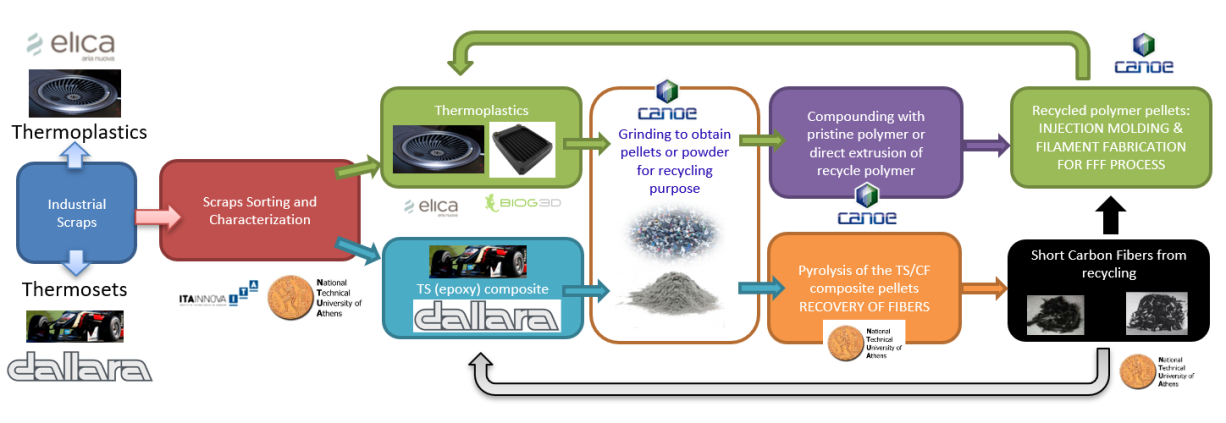Main Technical Achievements M24: January 2020
Nanocomposites with enhanced performance and smart capabilities (INEGI)
In the first 24 months of this project, INEGI studied the influence of carbon-based nanomaterials having different geometries, including one dimensional (1D-) carbon nanofibers (CNFs), and two dimensional (2D-) reduced graphene oxide (rGO) or graphene nanoplatelets (GNPs), on the mechanical and electrical performance of the epoxy resin. These carbon-based nanomaterials have been produced by SMARTFAN partners, NTUA and FORTH, under optimized conditions. Since continuous conductive networks are susceptible to external mechanical stimuli, 2D-rGO or 1D-CNFs nanocomposites were investigated as promising in-situ strain sensors. The Figure 1 showed the evaluation of the piezoresistive behavior of epoxy-based nanocomposites under quasi-static mechanical measurements.
A different behavior was systematically observed for nanomaterials having different geometric features showing that epoxy-based nanocomposites are promising materials for strain sensing applications with both tunable sensitivity and strain range. The DC electrical resistance of nanocomposites containing 2D-rGO increased monotonically until the ultimate failure, while for those reinforced with 1D-CNFs, the electrical resistance increased until a certain strain, followed by an increase of the conductivity that was promoted by the formation of alternative conductive networks through the connection of neighboring 1D-CNFs.
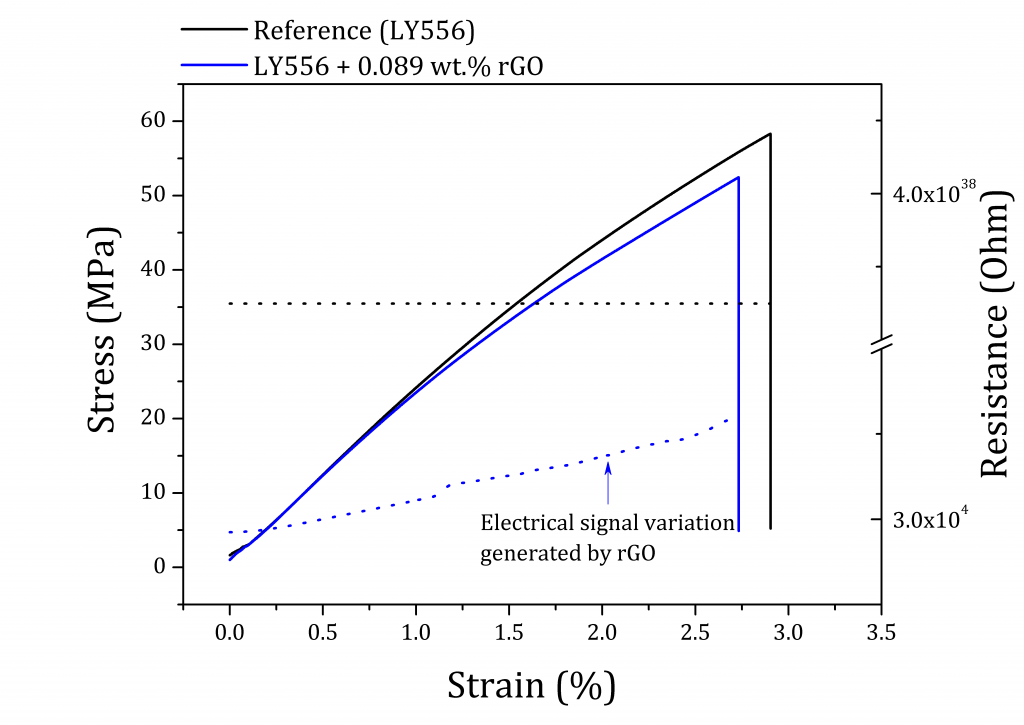
Figure 1
The evaluation of the piezoresistive behavior of epoxy-based nanocomposites under quasi-static mechanical measurements
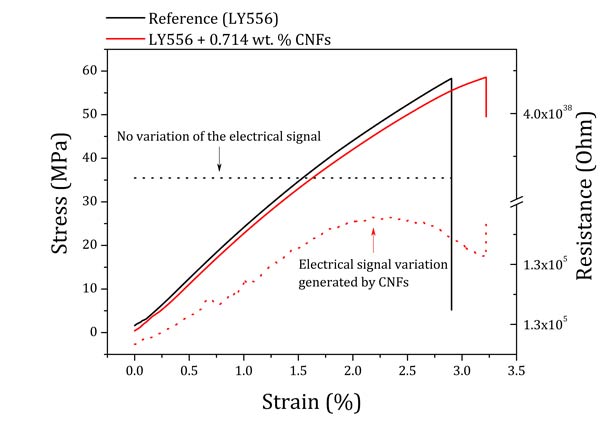
Smart carbon fiber reinforced polymers (CFRPs) (INEGI)
INEGI also used the modified epoxy matrices for manufacturing of nano-enabled carbon fibre reinforced polymer (CFRP) composites. The incorporation of carbon-based nanomaterials displayed a positive effect on both mechanical and electrical performance of the materials, which are being investigated for the production of racing car components. Great results have been already achieved for nano-enabled CFRP composites, especially in terms of their resistance against delamination. The modified CFRP composites with 2D-GNPs exhibited the impressive 100% improvements on the interlaminar fracture toughness, as it can be seen in Figure 2.
SEM images of the nano-enabled CFRPs specimens tested are displayed in Figure 3 denoting the presence of modified resin with 2D-rGO or 2D-GNPs covering the surface of the carbon fibers. The presence of well-dispersed nanomaterials in the modified CFRPs introduced new toughening mechanisms that enhanced the interlaminar properties. Smart CFRP composites with for strain sensing applications are under development at this moment.
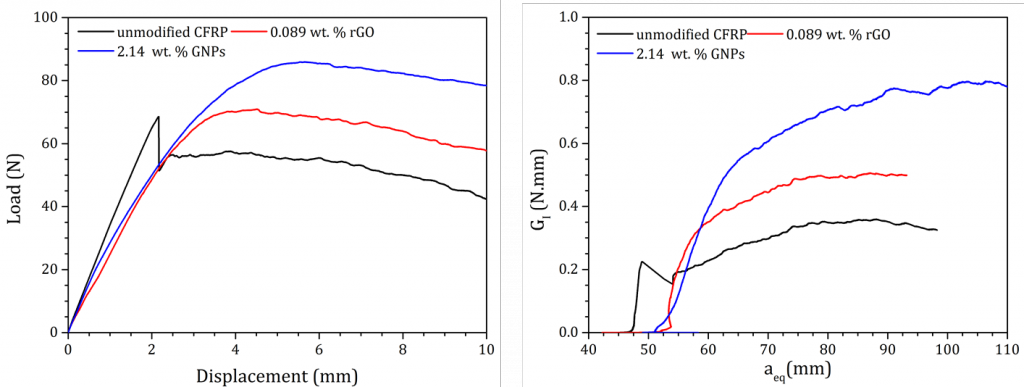
Figure 2
Representative load vs. displacement and resistance curves of the double cantilever beam (DCB) tests performed on unmodified and modified CFRPs with rGO or GNPs.

Figure 3
Representative load vs. displacement and resistance curves of the double cantilever beam (DCB) tests performed on unmodified and modified CFRPs with rGO or GNPs.
Development of electrically and thermally conductive thermoplastic (TP) polymer compounds (CANOE)
During the first 2 years of project, CANOE has worked on more than 20 different TP polymer formulations, varying polymer matrixes and wt% of nano fillers. Five selected formulations have been produced at 15 kg scale to enable demonstrator fabrication (domestic appliances). Moreover, few km of 3D printing filament with enhanced thermal conductivity has been manufactured for 3D printing of processor cooling system. This research work is ongoing as industrial scale trials are still in progress. It is carried out in partnership with nano-particle suppliers (NTUA, FORTH) and end-users (ELICA and BIOG3D).
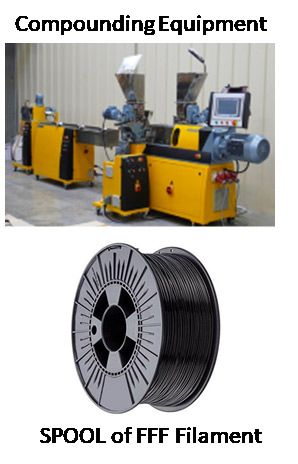
Smart particle integration into Carbon Fiber Reinforced Polymers (CFRPs) (CANOE)
Main research target is to improve the transverse electrical conductivity in CFRPs (perpendicular to fiber plies) and to use the electrically conductive behavior of the CFRP to obtain smart-composites with self-sensing properties. Smart materials are ready and provided to partners. Epoxy replacement with acrylic TP resins in CFRPs has just been initiated. This work will be continued for recyclability issues for automotive applications.
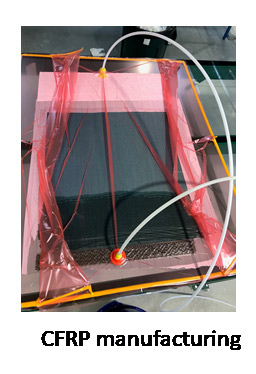
Introduction of induction heating functionality in polymers through magnetic nano-particles (ITAINNOVA)
During these first 24 months of the project, different magnetic nano-particles (MNPs) and their incorporation in polymers to introduce induction heating capability has been investigated. This material functionality can be used for healing, welding and deformation control in shape memory polymers, opening up new opportunities for different applications. In SMARTFAN, the MNPs have been successfully incorporated in PLA (Polylactic acid) matrix. Furthermore, 3D printing filaments with the modified PLA have been manufactured and will be used to test the material development in a product demo case (BIOG).

Chromophore microcapsules for damage sensing (ITAINNOVA)
ITAINNOVA has also been investigating about the utilization of microcapsules with fluorescent substances, as an additional functionality to reveal damage. In this sense, microcapsules considering different chromophore fillers have been synthesized and incorporated in epoxy resins. The first performance trials carried out evidenced the potential of the technique, allowing to identify cracks that cannot be detected by visual inspection. Currently the application of this technology in composites prepregs is being analyzed by INEGI.
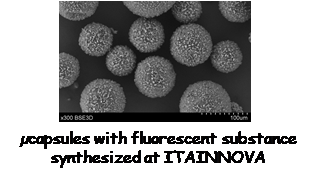

Molecular Dynamics Modelling (ITAINNOVA)
In paralel, ITAINNOVA has being developing molecular dynamics (MD) models to determine interfacial properties of some of the filler/polymer nanocomposite systems being addressed in the project and also to determine coarse graining (CG) potentials needed for the meso models.
The CG potentials for PLA (polylactic acid) , PP (polypropylene), EPO (epoxy resin), the graphene fillers being considered in SMARTFAN (G, GO, rGO) and the composites obtained by the combination of these materials have been determined. In addition, a comparative analysis of properties of the different graphene fillers mentioned has been performed.
As mentioned, this information is being used in the project to feed models at higher scales (meso models being developed by POLITO) following the multi-scale approach proposed in SMARTFAN to support the materials developments (properties prediction and materials design/optimization).
Thermo-physical properties of graphene reinforced polymeric composite (POLITO)
To assist design and development of SMARTFAN materials with specific multi-functionalities Multi-physics modelling tools have been applied. In particular, multiscale simulation has been performed to understand the influence of graphene-reinforcement on the thermo-physical properties on polymer nanocomposites. The study shows that the mechanical strength of composite is improved by more than 30% compared to neat polymer by addition of 2 wt% of graphene, while the effect of graphene reinforcement on thermal properties is negligible.
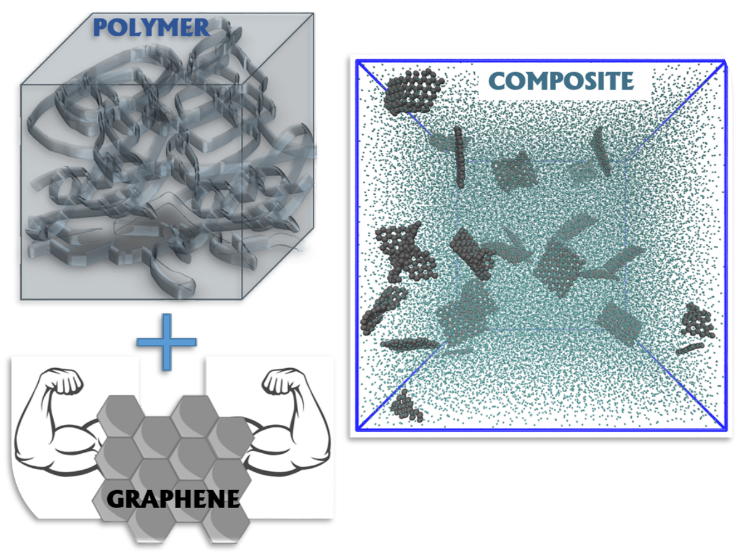
Electromagnetic inference shielding application (POLITO)
One of the task in the SMARTFAN project is to design and develop EMI shielding material for shielding the electromagnetic radiation in the X band (8 – 12 GHz) and Ku band (12 – 18 GHz). Therefore, finite element modelling simulation is ongoing to understand the effect of various parameters (electrical conductivity, magnetic permeability, dielectric losses and thickness) on the EMI shielding behavior of the material.
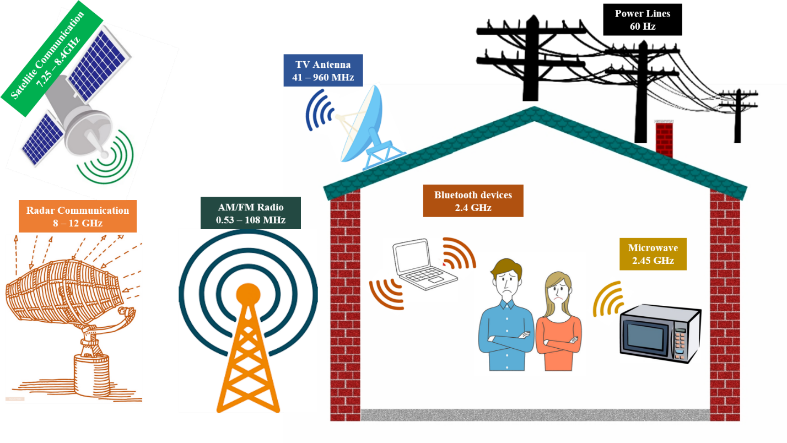
Design of CFRP automotive demonstrators (Dallara)
Two CFRP demonstrators, an energy absorber for the automotive industry for large scale production and a front wing for racing cars, were designed by Dallara within frame of the SMARTFAN project. The aim is to reduce the manual operations and, as a consequence, the cost of the part. A new concept was introduced in the design of the front wing to allow the production by compression moulding, including a geometry with an undercut.
First tooling for the production of both demonstrators were produced in M22, and a first prototype was manufactured. In the next months these demonstrators will be manufactured with the SMARTFAN materials, resulting in high performance and self sensing parts with competitive cost.
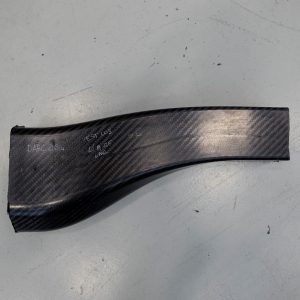
Development of bioinspired 3D printed processor cooling system (BioG3D – New 3D printing technologies)
During the first 24 months of SMARTFAN, BioG3D has dealt with the design and development of the Heat sink of a bioinspired processor cooling system with improved overall effectiveness, through 3D printing. The targeted properties for the heat sink is the increase of the heat flux through its whole volume, the decrease of the operating noise and the decrease of the system’s weight. Towards this direction, structures that self-response by pre-programming their architecture were designed and composite filaments reinforced with carbon-based nanoparticles were employed. The design of the heat sink incorporates different polymeric materials, to attain the desired properties (Figure 1). Specifically, for the heat sink base a shape memory polymer (PETG) and an elastomer (TPU) were utilised to achieve self-morphing upon thermal stimuli. To ensure optimum control over the bending function, design parameters were optimised and auxetic patterns, were introduced in the infill geometry. Heat sink’s fins were also constructed from the shape memory polymer. Finally, the central part of the heat sink (depicted in black color) was fabricated by employing a thermal conductive composite filament (produced from CANOE), consisting from a polyamide matrix and reinforced with CNTs and Graphene nanoplates.
Moreover, an initial design of the processor cooling system fan was created by employing Reverse Engineering principles through 3D scanning of a commercial available unit (Figure 2). In the upcoming period, the design parameters of the heat sink’s architecture, such as fins dimensions and shape, curvature angle, size of each part and infill design, will be evaluated and optimised. Additionally, design of the fan will be modified to introduce self-morphing and optimum functionality.
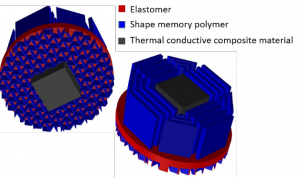
Figure 1
Design of the Heat sink architecture.
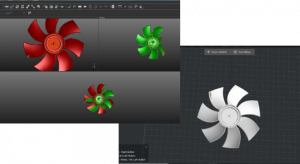
Figure 2
Fan 3D scanning and 3D model development
Studies and application of IoT, Machine Learning and Artificial Intelligence to the SMARTFAN demonstrators (Techedge)
Techedge is undergoing experimental studies on IoT and signal processing equipment, in order to create Machine Learning (ML) and Artificial Intelligence (AI) applications to analyze data coming from fan devices based on technology developed by the SMARTFAN partners.
The goal of these studies is to find the best architectural solution (both hardware and software) to achieve the IoT implementation and data analysis at is best. In this direction several IoT devices (as Arduino Nano/Uno and Microsoft Sphere) and edge computing hardware (as nVidia Jetson platform) are being testing to realize a fully operational pipeline, from data acquisition to ML and AI applications. These efforts are towards the creation of energy saving and predictive maintenance applications, which combined with the new material developed by the SMARTFAN partners could activate a “quantum leap” in these fields.
In addition, currently, a collaboration with the SmartFan partner ELICA is going on in order to examine the best experimental setup propaedeutic to acquire the physical signals coming from their devices. These signals will be the core of the AI applications that are being designed, giving insights on how to properly separate the noise from the signal to be processed.
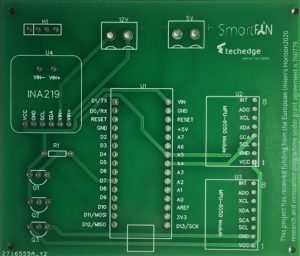
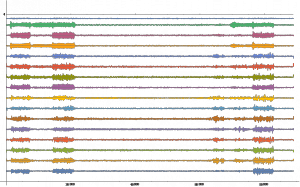
Figure 1
Top picture – Techedge printed circuit realized in order to implement Arduino Nano together with IoT sensors to acquire signals from fan devices. Bottom picture – Vibration data analysis test on a series of different fan devices.
Recycling within SMARTFAN (NTUA)
From June 2019, recycling activities in SMARTFAN have been initiated. The aim was to propose guidelines regarding the recycling of polymer composites, considering both thermoplastics and thermosets. In order to provide proper guidelines to the project partners, an internal investigation started within the consortium, to identify the scrap materials that are abundant and need specific handling; industrial partners have been contacted for this reason. Specifically, ELC represented the thermoplastic wastes streams that occur during injection moulding and DAL represented the thermoset waste streams from automotive.
Also, special focus has been given to the materials used within SMARTFAN project for Additive Manufacturing, and the varying processes through which the scrap material that is generated can be identified, sorted, recycled, characterised and reused. For the case of thermosets, different strategies have been suggested, to increase the resources efficiency and to identify the re-use possibilities for the epoxy-based scrap in lower value structures or as low value filler, suitable for industrial use. Taking into account the available scraps within SMARTFAN consortium, the following flowchart has been developed, as a guideline for reusing/recycling the composites wastes in WP4.
Recycling within SMARTFAN
(NTUA)
